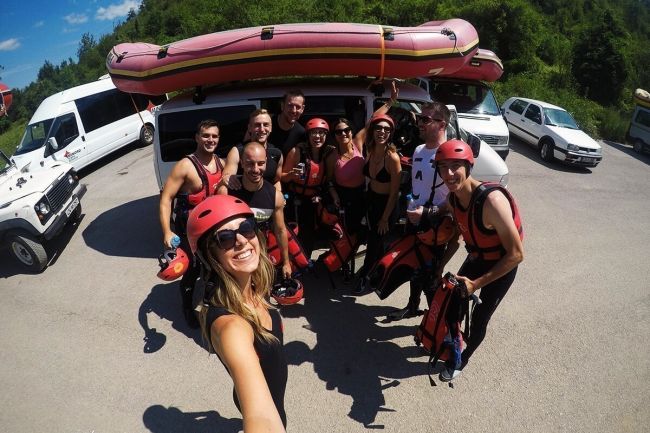
Class 1 - EASY
CLASS 1.: EASY. Fast water with small waves. Rare obstacles that are noticeable and easy to avoid. Danger for swimmers is small and self-rescue is easy.
Class 2 - FOR BEGINNERS
CLASS 2.: FOR BEGINNERS. Straight rapids with wide, clear passages and a current easily spotted without lookouts. Occasional manoeuvres may be necessary, but rocks and medium-sized waves are easily passable for trained rowers. In the case of swimming, injuries are rare and rescue assistance is rarely needed.
Class 3 - INTERMEDIATE
CLASS 3.: INTERMEDIATE. Rapids are with moderate, uneven waves that can be complicated to avoid. Complex high-speed manoeuvres and good control of the boat in narrow passages or around obstacles, rocks, are often needed. Large waves and dangerous obstacles can be present, but they are not difficult to avoid. Lookout is recommended on some parts, self-rescue is relatively simple and assistance is needed in order to avoid a longer swim.
Class 4 - ADVANCED
CLASS 4: ADVANCED. Intense, powerful, but predictable rapids require precise vessel management in turbulent water. There is a possibility of encountering unavoidable waves, as well as potentially closed passages. Lookout before descent is highly recommended. There is a medium to high chance of injury in the event of a swim. Self-rescue assistance is highly recommended.
Class 5 - EXPERT
CLASS 5.: EXPERT. Very long, blocked or strong rapids expose the rower to above-average danger. Falls can contain large unavoidable rolls and waves, or steep passes along a demanding route. Rapids can be very long between quiet parts, so they require a high level of physical fitness. Counter currents can be small and difficult to access, rescue by the team is often necessary for survival and lookout is also necessary but often difficult to perform.
Class 6 - EXTREME
CLASS 6.: EXTREME. One degree more difficult and complicated than class 5, it is extremely difficult, unpredictable and dangerous. The consequences of mistakes are severe, and rescue can be impossible. It is recommended only for teams of experts at a favourable water level, after a detailed personal lookout and taking all preventive measures.
These classes can include plus or minus + - signs, which define the details in the classes more closely.
It should also be said that the classification is ultimately done by personal and therefore subjective assessment.
The Tara river is always somewhere between third and fifth class on the scale. current position may depend on many factors, but some of the most important are: season, water level, number of rainy days and amount of rain, the amount of snow on the surrounding mountains in winter, the beginning of melting snow, how fast snow will melt in the spring, etc.








